Cuba Pt I

Trippwire
Tue 13 Apr 2010 02:55
|
Well, Cuba....it's a tale of two stories - that of
visitors and that of residents. And it seems that it requires a lot
of patience, and a lot of digging to even begin to understand the country, or
even spend more than a few weeks here.
In Cuba you are only allowed to enter the country
at a designated port of entry - fair enough you may say, but Cuba also has a
habit of deciding to close ports of entry at a moment's notice. It also
currently operates only three on the entire north coast (two of which we
are able to get in to) which to be safe meant entering the country a little
further west than we had originally hoped. So after a
long 24 hour passage we arrived at Marina Vita to be told that we had to
anchor up in the bay and wait for a doctor to arrive to assess us. A
couple of hours later (and after putting a very extensive medical kit into a
very deep bilge), a doctor did indeed arrive (on the back of a jet ski and
wearing a facemask...not, we understand due to the smell on the boat!) and after
a short quiz on what medication we had on board (obviously none sir), we
were given a clean bill of health. We were then allowed to moor up at one
of their pontoons to wait for the plethora of officials to
arrive. 5 further hours, a very excitable sniffer dog, countless
officials and all of our portable electronics being sealed up later, we had
successfully entered the country and were allowed to leave the boat....or
so we thought. We were then, however, greeted by an overly friendly marina
manager, who had adopted us as 'her people' and wanted to (rather theatrically)
tell 'her people' (in between kisses) everything about Cuba.
Finally, we managed to extract ourselves, by which time it was time to eat and
go to bed!
Next morning we set off in search of internet
access and a bank. An easy task you may think, but after an entire day
going round in circles, we gave up. The bank was easy, but internet access
was (and remained so for the time we were in Cuba) a total nightmare.
Internet is only available in tourist hotels and with one exception that we
found - on government monitored computers. To get access to the
computers, you have to be a resident in the hotel, if you're not a resident, you
just can't get access, and even if by some miracle you manage to buy a card, the
internet just isn't fast enough to get on to your email, and send an email all
in one session. Cuba isn't keen on tourists being outside of the
resorts, where the security guards can't keep a close watch on you!
A trip to Holguin the next day gave us our
first glimpse of rural cuban life. A hard life, where farming
dominates, but without machinery, and with very small farms. After the
revolution land was re-distributed with the effect that nobody really
has enough land to provide for themselves yet huge areas are left
uncultivated. Most homes have little comforts, and very few have potable
water. As we began to understand later, people get by by bending the
rules, and clubbing together. With informers on every street corner
though, this isn't always easy.
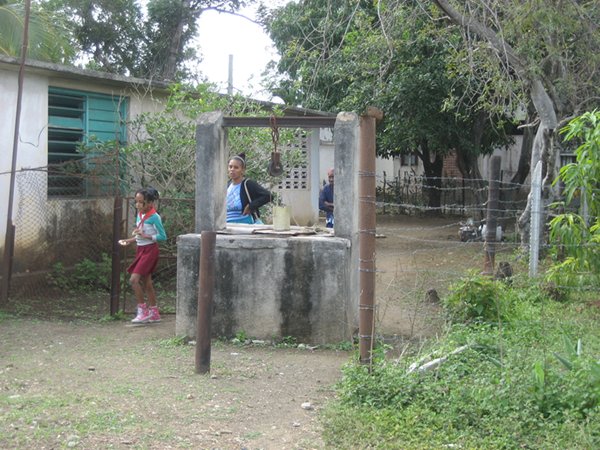 The village water supply
We took the opportunity of the marina manager's day
off to escape Marina Vita with the intention of hopping down the coast.
Here we began to see some of the frustrations of travelling around the
country. We had hoped to hop along the coast, both with Miles' parents,
and later with Laura and Lindsay, but you are not allowed to leave the boat or
accept new people on to the boat unless you are at a marina, and as alluded to
above, the two marinas that we are able to get in to are 450 miles
apart. As we didn't think either party fancied a three day non-stop
trip, this meant sailing straight from Porto Vita to Marina
Hemmingway. No problem we thought - as we would not have
any changes to the crew, and we had stocked up (as much as you can in Cuba) on
food, we though we could day hop from bay to bay. A quick look at the
charts however, revealed that a) there are also very few permitted anchorages,
and b) most of the anchorages that we could get in to (maybe a catamaran
makes sense afterall!) are just behind coral reefs and majorly exposed to
northerly winds - ie essentially no shelter and no room for any
error! We set off, me living in the hope that we would still be able
to day hop, and Miles staying mysteriously quiet. The first day went well,
and after a rather laborious check out procedure, we travelled a hard fought 35
miles along the coast before pulling in to Puerto
Padre - a commercial port, but still a stunning bay, for the night.
An overly eager customs official radioed us on the way in - we still have no
idea how they knew we were there, and we realised that the monitoring system
obviously works. We also realised that our hopes of not checking in
(and therefore out) had been dashed. Check in wasn't too painful,
but as we radioed at the agreed 7am departure time the next morning,
news of a 'big ship' on it's way in foiled any hope of leaving for a couple of
hours. Finally we were given the go ahead, and the paperwork was filled in
ready for departure (only two hours late).
Off we went....and went....and went, until I slowly
realised that maybe my hopes of another night's sleep....and maybe even the
next night's sleep too had been dashed. The wind and swell kept
up (as murphy's law would dictate - from a northerly
direction), and as I watched each potential Cay passing
by all those thoughts of spending my birthday anchored up by a deserted
island, snorkelling on a reef with turtles and rays, eating barbequed
fresh fish on the boat were slowly replaced by a third day of passaging, and
another 5 hour check in process. Not to worry, the following day was
spent exploring Havana, eating to the sounds of the Buena Vista Social Club
(funny - I thought all but two were dead - seems they are very much alive, and
rather younger than they used to be and playing in the restaurants
of Havana), and staying in a fantastic hotel in the old town. Not a
bad way to spend a (albeit postponed) birthday!
So, Havana....
Again - a tale of two Cities. The old
town is in the process of being restored by UNESCO, and is stunning. The
buildings are beautiful, live music is played in every bar (a novelty at first,
but wears after a while!), and the restaurants are stocked with plentiful food
and drink (if you like chicken, beans and rice). Just outside the old town
it is a different story. The tourists don't seem to venture this far,
and neither do their CUC's. Buildings are crumbling, and many that seem
inhabitable are inhabited by large families. Rations provide the mainstay
of people's diets, and basic goods are in short supply.
The old town:
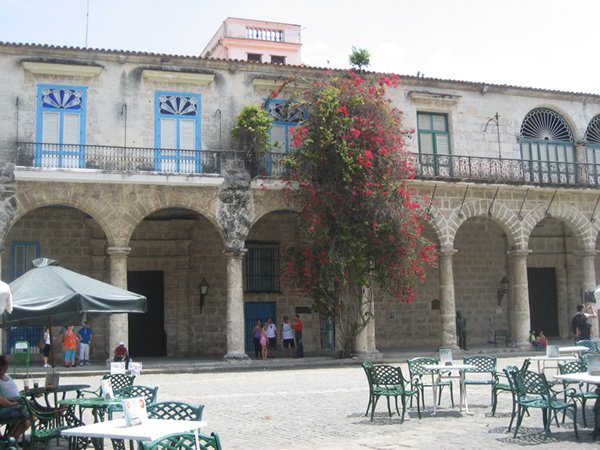  Just outside the old town borders:
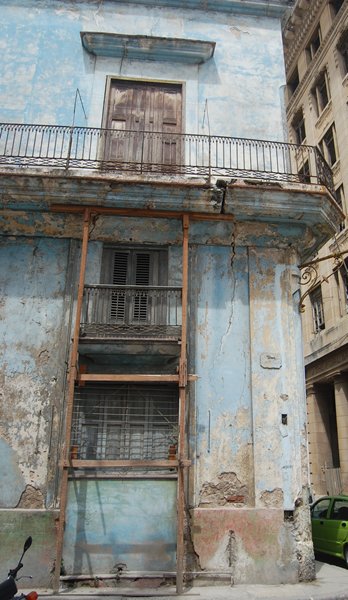  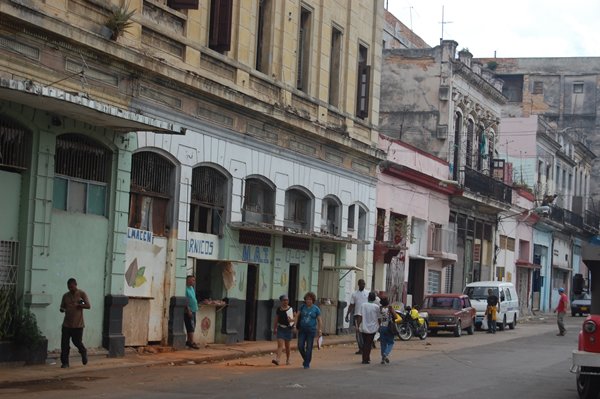 One of the hardest things to understand is how a
country that rivalled Madrid and could afford to build buildings like
this:
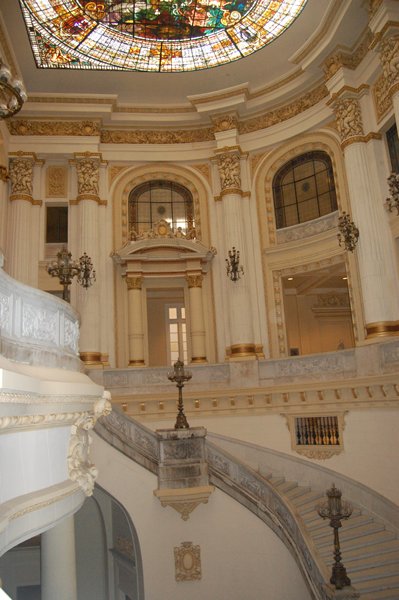  and has a highly educated population ends up 50
years later with rationing, and transporting it's people like this:
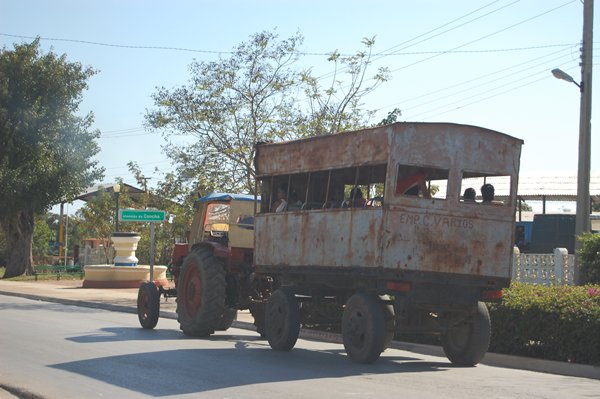 One thing that is certain is that embargos don't
work, and the US has a lot to answer for...
After a whistle stop tour of Havana, we met up with
Miles' parents, sampled a little of the city with them, a little ballet at the
national theatre, and headed out to the north west with Analdo (our local guide)
in the driver's seat. The north west is the main tobacco growing region,
and is set in a stunning karst backdrop.
 tobacco farms are the mainstay, along with
sugarcane production and a rapidly increasing tourist base:
 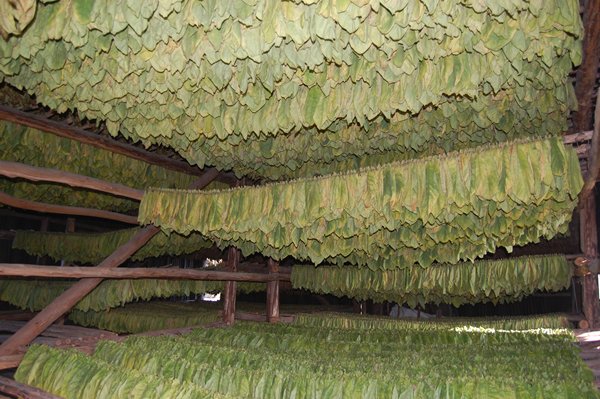 Who would think tobacco comes from such a beautiful
plant?
 This farm is run by an amazingly eloquent chap
who came across as being very entrepreneurial. The only problem is that he
has to give 90% of his crop to the government. This doesn't
leave much to develop his own business with. As with all of Cuba, any
entrepreneurial activity is frustrated either directly by the government, or via
taxes, keeping most people at subsistence levels.
Sometimes, progress is rather slow!
 A sugar factory - unfortunately we couldn't go
in to look around:
 Taking our life in our own hands (Cuban roads
aren't great), we headed back to Havana, and off towards Trinidad, in the
south of the island the next day. Trinidad is a beautiful former colonial town,
and again, a town of contrast:
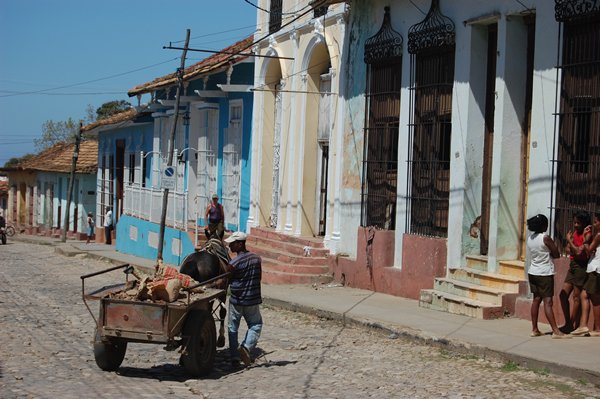 Life is pretty basic, with little in the shops, a
very basic transport system, and a lot of people with time on their
hands
 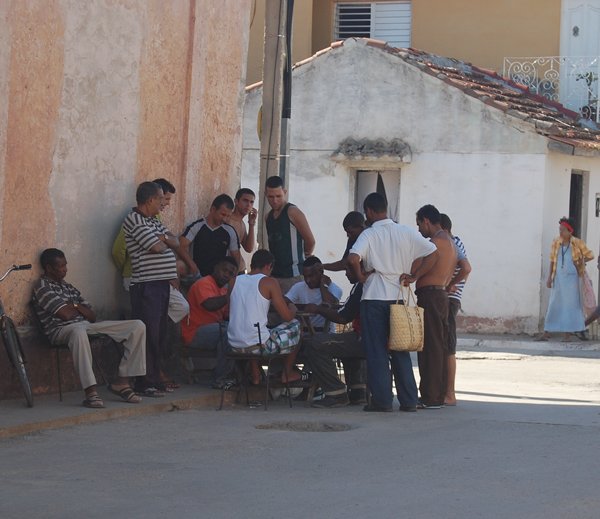 but a highly developed tourist base. We were
lucky enough to stay in a lovely casa particular, very close to the centre of
the town. Up on the roof garden, it seemed a million miles
away:
 Casa particulares are rooms that are available to
rent in Cuban's houses. It is a much more interesting place to stay than a
hotel, and often much better. It gives you a tiny glimpse of Cuban life, and in
this case - the food was much better! Casa particulares are heavily
regulated. People that run them are not allowed to take any other
employment, must give a certain amount of money per room per month to the
government regardless of whether they are let out, and if they are caught
infringing even the slightest rule their house can be taken away from
them. Similar regulations are there for taxi drivers - they must give
a certain amount to the government each month, regardless of what they have
earned - in high season this is possible, but in low season it is not. If
they do not make their target, they are suspended without pay for a month.
As you can imagine, the money earned over and above the targets in high season
(which is also supposed to be given to the government) is a 'grey
area'!
After a couple of days in Trinidad, we stopped at
Giron to learn a little more about the revolution before heading back to
Havana. But as you can see - you don't need to go to a museum, there
are visual reminder of the revolution everywhere:
 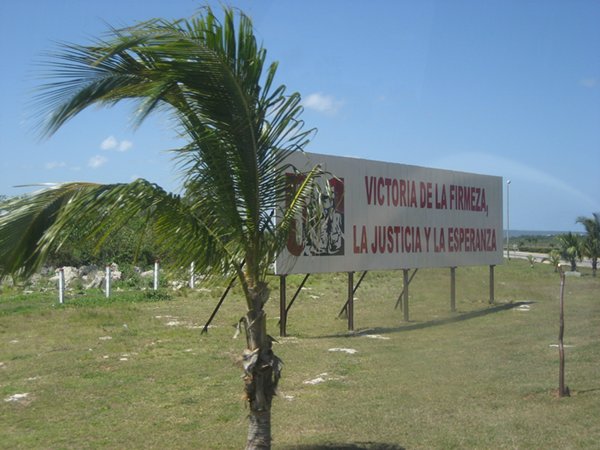 On the way back, we were greeted by the most
amazing spectacle - crabs crossing the main coast road to reach the sea to
breed. It sight was just spectacular - the whole road was bright red with
crabs. Given the number that don't make it - I really hope they are
successful. I have read about this, but have never seen it - it really is
incredible - a real highlight.
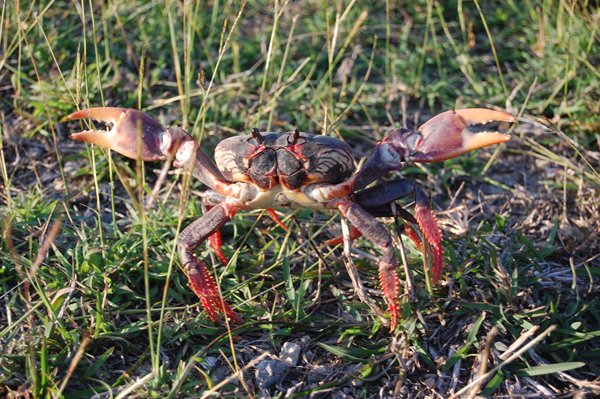 Back in Havana, Miles' parents kindly took us
to Club Tropicana for my birthday. This is an extraordinary outdoor show
with more visuals than I think the brain can cope with. The dancing was quite
spectacular, but the strongmen were truly impressive. I still don't
believe that half of what they were doing is physically possible! Thank
you both so so much. It was immensly kind of you. In fact, thank you both
so so much for everything that you did for us whilst you were here, it was
great to spend time with you, and you were amazingly generous. Thank
you.
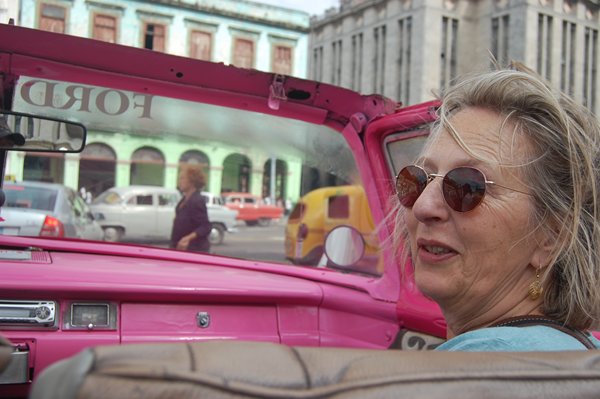 |